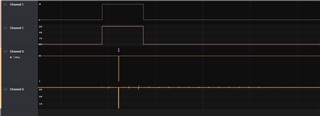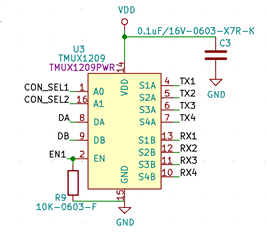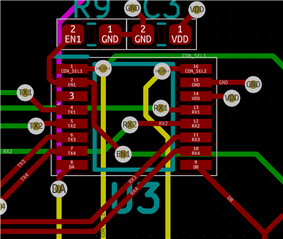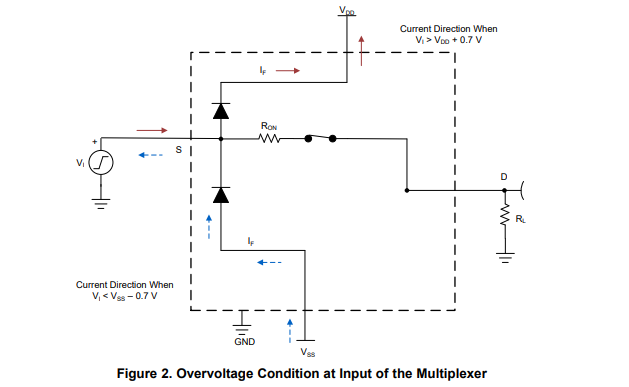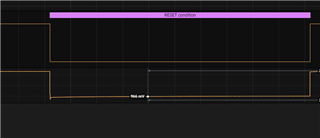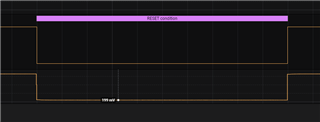Other Parts Discussed in Thread: TMP107
We have a 2 * 1:16 multiplexer device, which communicates with sensors and reads battery voltages. When measuring the batteries, we have an in-line resistor to protect from over current draw which has fired multiple muxes in the past. On a brand new set of these muxes, that were only used to communicate with sensors (DS18B20, and TMP107) we see that sometimes these muxes stop working at random, and need to be replaced often. We had muxes just open all the switches at once, even when the EN line was pulled low, and sometimes a single channel breaks and the mux becomes useless. Is there something that we can do to eliminate the failure rate of this mux?
Its powered at 3.3V, with the sensor logic also at 3.3V, the communication line is pulled up to 3.3V with a 10K resistor on all channels. When measuring the batteries the muxes switch to a 5V supply, with the batteries never exceeding 4.2V.
The attached pictures show the EN line on channel 1, and the Data transmitted by the master to slave 3 on channel 3. Digital waveform on top, and analog on the bottom. I sent a photo of a broken mux, and a working mux which was just replaced. The broken mux has one message on channel 3 as apposed to 16 messages on channel 3 on the broken mux.
the mux has a 0.1uF capacitor on its input power, and the EN line is pulled low with a 10k resistor.

